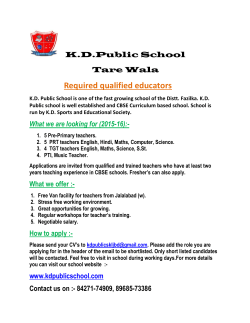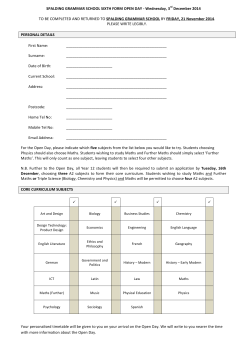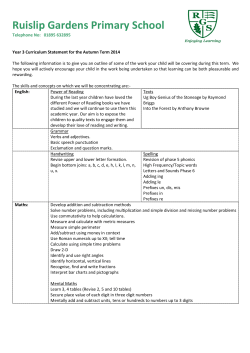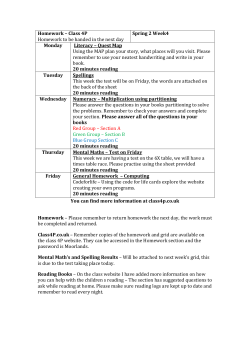
Vocabulary Games for the Classroom
ca ti on E du ow VOCABULARY ro w nl GAMES FOR THE H aw ke r B CLASSROOM © LINDSAY C ARLETON ROBER T J. MAR Z ANO ca ti on INTRODUCTION E du Direct vocabulary instruction is fundamental to eff ective teaching. Our knowledge about and understanding of any topic is rooted in our mastery of the terms relevant to that topic. To some degree, this is common sense. Consider social studies students learning about government. Certainly they must have a fi rm grasp on terms such as executive, legislative, judicial, bill and vote (among others) in order to demonstrate profi ciency for learning goals on this topic. In other words, there is a direct link between an understanding of academic vocabulary and an understanding of academic content. nl ow What is also clear is that there is a vast diff erence in the vocabularies of low- versus high-achieving students. Data collected as far back as 1941 indicate there is roughly a 6000-word gap between students at the 25th and 50th percentiles on standardised tests in years 4–12. Since the 1980s, researchers have estimated the diff erence to be anywhere between 4500 and 5400 words for lowversus high-achieving students (for a discussion, see Marzano, 2009). Th is means we can take the commonsense connection between vocabulary and content one step further and conclude that the size of a student’s vocabulary is directly related to their academic achievement. B ro w Th e purpose of Vocabulary Games for the Classroom is to provide all P–12 teachers with a wide variety of games to build both academic and general vocabulary in their classrooms. While games have been sometimes misused or underestimated by classroom teachers, roughly sixty studies done by Marzano Research showed that, on average, the use of academic games in the classroom is associated with a 20 percentile point gain (Haystead & Marzano, 2009). H aw ke r To a great extent, this book is a complement to three other books on vocabulary instruction: Building Background Knowledge for Academic Achievement: Research on What Works in Schools (Marzano, 2004), Building Academic Vocabulary: Teacher’s Manual (Marzano & Pickering, 2005) and Teaching Basic and Advanced Vocabulary: A Framework for Direct Instruction (Marzano, 2009). Together, those books lay out the rationale for a comprehensive schoolwide approach to direct instruction in academic terms as well as terms necessary for general literacy. Th ose books recommend a process for teaching new terms, which includes the following six steps: 1 Provide a description, explanation or example of the new term. © 2 Ask students to restate the description, explanation or example in their own words. 3 Ask students to construct a picture, symbol or graphic representing the term. 4 Engage students periodically in activities that help them add to their knowledge of terms in their notebooks. 5 Periodically ask students to discuss the terms with one another. 6 Involve students periodically in games that allow them to play with terms. (Marzano & Pickering, 2005, pp. 14–15) © 2010 Hawker Brownlow Education • MRL6217 1 1 ca ti on WORD HARVEST E du For lower primary English, maths, science and social studies Design ro w nl ow This game is modelled after the game Apple Picking in Susan L. Kasser’s (1995) book Inclusive Games: Movement Fun for Everyone! However, where that game focuses only on movement, Word Harvest focuses on vocabulary as well. It is best for lower primary students, and uses terms from English, maths, science and social studies. Teachers in a self-contained classroom can use a variety of terms from different content areas as well as general literacy terms. Because students will need a working understanding of the terms and phrases used in the game, select only those with which they will be familiar. B joy r mad hur t pond aw ke la ke river sad bay unhappy puddle glad H pool sorr y Emotions © Bodies of Water o c ea n Materials You will need project paper (brown, green and red), scissors, tape, two buckets or baskets, and cards. © 2010 Hawker Brownlow Education • MRL6217 7 4 ca ti on TWO OF A KIND E du For lower and upper primary general vocabulary Design ow Two of a Kind is modelled after the game Memory and focuses on homonyms. It is best suited for building the general vocabulary of primary students. Students must have familiarity with the words being used. nl Materials b a re ro w You will need blank cards. Set Up b ea r aw ke r B In advance, write one word (a homonym) on each card, leaving the other side of the card blank. For example, if you u write steell on one card, write steal on another. Create a master set of cards constituted by pairs of homonyms (between five and fifteen pairs works best), then make enough copies of the set to distribute among your students. The class will be broken up into small groups or pairs, and each group will need an identical set of cards. H Before playing, set up a separate station for each group by laying the cards facedown in rows. The idea is that when they begin, none of the students know what or where any of the words in their set of cards are. © Play Just like Memory, a student takes a turn by flipping over two of the cards. If the two words he finds are homonyms, he keeps both cards; if they are not, he turns them back over, and another student gets a turn. The object is to collect as many cards as possible. The game is over when all of the cards have been collected. Rounds can be set up so that the winner of one game plays the winner of another until one student has prevailed (keep in mind that you will need new sets of cards for each round), or it can be played just for fun—no points awarded or winners declared. © 2010 Hawker Brownlow Education • MRL6217 19 78 VOC A B U L A RY G A MES FO R T H E CL A S S RO O M You can choose to play in one of two ways. The first and simpler way to play (described in the preceding text) is that you provide the verbal step-by-step directions using the relevant vocabulary terms and phrases, and the students’ only job is to follow those directions to find where you are hiding. ca ti on The second way to play is to have students take turns providing verbal-only directions to the class. In this case, you should give the student a list of the terms and phrases she can use to help her classmates find her. With younger students, you might even let them decide where they want to hide and write out the directions for them to read. Vocabulary Words Maths H nl ro w B r aw ke above behind below beside between far in front inside left location near next to outside over right under within ow Lower Primary Social Studies © Lower Primary airport Australia body of water city city park country creek dam desert direction downtown forest highway home hospital hotel lake location map mile mountain museum nation neighbourhood ocean railway river road shopping centre sports stadium state stream town yard E du As discussed previously, terms you choose may be prepositions or nouns (common or proper). The following terms and phrases we have provided are general (and only in the subjects of maths and social studies) as this game needs to be tailored to each class. Upper Primary Afghanistan Africa Americas Andes Antarctic Circle Appalachian Mountains Asia Atlantic Basin Atlantic Ocean Australia Baghdad Balkans Bering Land Bridge Bering Sea Black Sea Brazil Britain British Isles Buenos Aires Cairo Canada Canberra cardinal directions Caribbean China Cuba Dominican Republic East Coast Eastern Hemisphere Egypt England © 2010 Hawker Brownlow Education • MRL6217 13 ca ti on CLASSROOM FEUD E du For lower and upper primary, middle and high school English, maths, science and social studies Design ow Classroom Feud, modelled after the old game show Family Feud, can be used as review in any of the four major content areas (English, maths, science and social studies) at the lower and upper primary, middle and high school levels. nl Materials B Set Up ro w The material needs for this game vary. If you are using a pencil-and-paper approach, you will need cards. If you want to display the game questions, you will need an overhead projector or something similar. © H aw ke r As with What Is the Question?, prepare the game questions ahead of time. Make sure there are at least as many questions as there are students in the class. You can use multiple-choice, short-answer or fi ll-in-the-blank formats for your questions, but make sure you have approximately an even number of questions using each format. For example, if you have five multiple-choice questions, it is best to have five fill-in-the-blank questions as well. Also keep in mind that fill-in-the-blank items are more difficult because they require the student to recall the answer, while multiple-choice and alternative-choice items require only that students recognise the correct answer. Students will have a very limited period of time to answer, so if you are using a short-answer format, make sure your questions allow for complete answers to be given quickly. Play Split the class into two teams and tell each team to identify an initial spokesperson. The spokesperson’s job is to confer with their team during the time allotted (usually fifteen seconds) and either deliver the agreed-upon answer, or make the ultimate decision in the case of a disagreement. Each time the team gets a turn, a new student acts as the spokesperson. © 2010 Hawker Brownlow Education • MRL6217 115
© Copyright 2025













